
Platformers are perhaps the purest genre of video games. It’s just you, the challenge the developers have set before you, and an assortment of tools to overcome it. Sure, there may be baddies to bash along the way sometimes, but for the most part any “combat” is really just a moving obstacle in your path. In the best platformers, you don’t even need a challenging level to have fun; the simple joy of movement just feels that good. Movement in Penny’s Big Breakaway feels good. Like really good. In fact, some of the best parts of the game are when you ignore the level design entirely to carve your own path through as quickly as possible, flying over gaps at incredible speed. Even so, a hefty amount of jank and a much weaker second half can bring you crashing back down to earth.
David:
Penny is a performer, and on her way to audition for a spot in the yearly Gala run by Emperor Eddie, she finds a magical yo-yo. Unfortunately, the yo-yo has a mind of its own on stage, and now the pair are on the run. Hence the Big Breakaway. You need to use Penny’s acrobatics and Yo-yo’s abilities to reach the goal of each stage and defeat a few bosses at the end of some worlds. You move Penny around with the left stick, jump with A or RB, throw Yo-yo forward with X or the right stick for finer control, and ride on Yo-yo in car form by throwing it on the ground with RT.
You essentially have 3 buttons, but these expand into a broader moveset. For example, by throwing Yo-yo out and holding the button/stick, it’ll stay in place allowing Penny to swing from it. Combine this with a dash by throwing Yo-yo twice in quick succession, and you can gain momentum to swing across a big gap, then use the double jump to gain a tiny bit of height and more air control by sacrificing momentum. You can use these actions in any order, but only once each before touching the ground again. To keep your momentum and combo going, you’ll want to ride the car almost exclusively, especially downhill to gain speed. It’s a very fun loop that has you constantly looking for unorthodox routes through stages to shave a few seconds off your time or just keep your flow going.
This flow is bolstered by the excellent music and audio design. You’ll be tapping your feet the whole way through, but my personal favorite track was “Jig’s Up, Penny” featured in World 1. Its got a feeling of mischief alongside a circus sounding motif that perfectly fits Penny’s character design. Likewise, the sound effects you’ll hear as you bounce around the stages are delightfully cartoony. Every move has its own, distinct sound effect and I suspect that even if you’re not looking at the screen you know exactly what Penny is doing just by the sound. Even the menu sounds are satisfying, reminding me of Dreamcast Era games or, more appropriately, Sonic Mania. No matter what you’re doing, it feels snappy and quick.
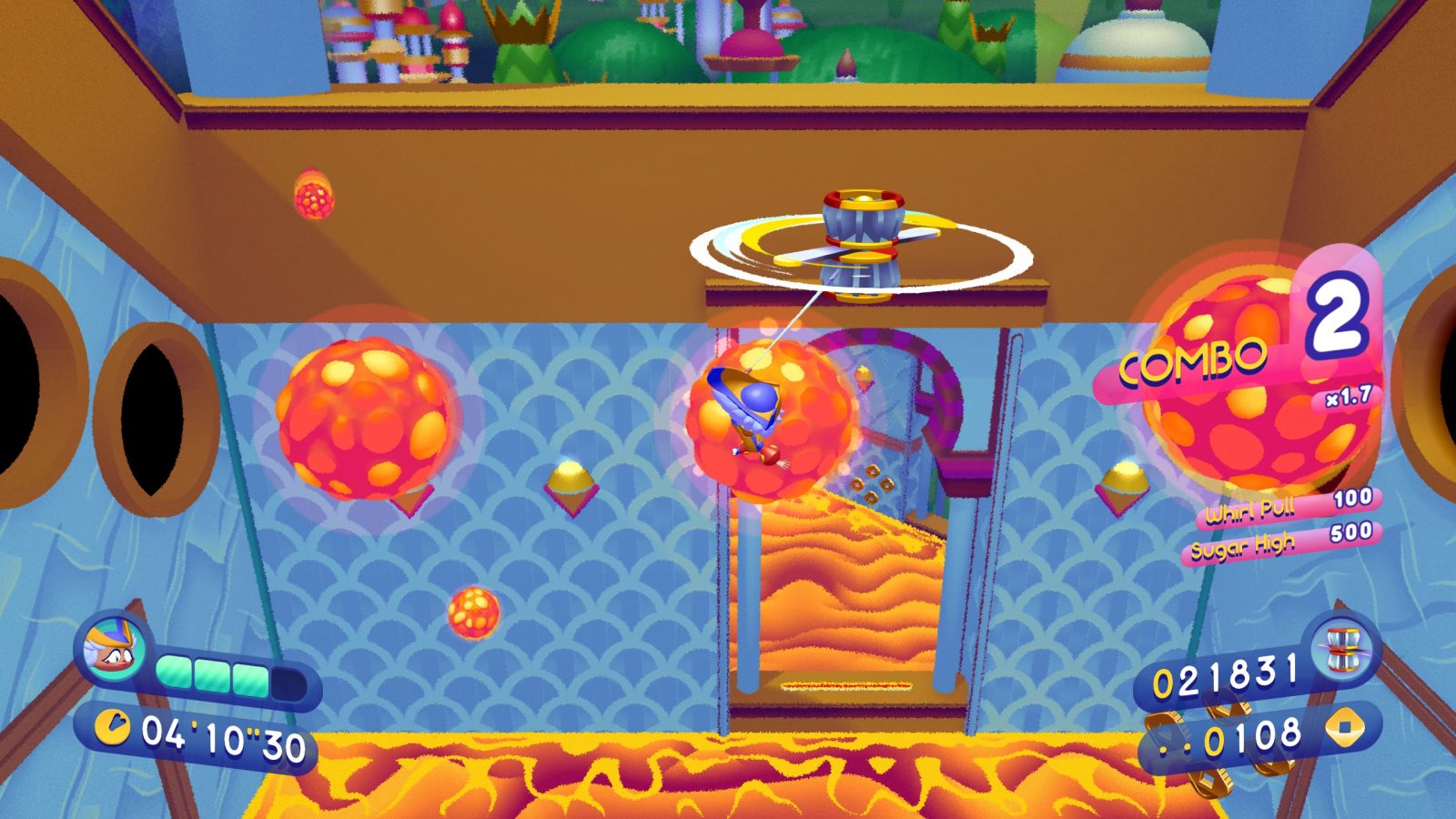
Sometimes, the level design perfectly compliments this speedy playstyle. Other times, it feels completely counterintuitive. Each level has three Dilemmas and three Show Pieces to solve and find respectively. Dilemmas vary in objective, but usually have you taking an item to another NPC in the level without taking damage, collecting a set of objects within a time limit, or reaching a high enough score within a section of the stage. Show Pieces, meanwhile, are either hidden or in hard to reach areas. Both of these need you to take your time and explore. I trust you see the problem. Everything else in the game encourages quick play, while these side objectives require the opposite. While initially I thought this was to nudge the player towards multiple runs of every stage, doing that doesn’t feel very good. Penny’s running speed is too slow for comfort, so you want to do tricks to go faster, but if you go faster you might miss a Dilemma or Show Piece. That said, I fully cleared everything up through World 5, so there is still fun to be had here.
There are issues throughout, but the problems really start to crop up in World 6, a little over halfway through the game. This is where you start to encounter obstacles that completely halt your progress like shelves you need to pull out or spiked blocks you need to flip over. It’s probably possible to skip past most of these if you’re skilled enough, but for the rest of us it’s a frustrating interruption to the game’s flow. I’m all for encouraging players to find new routes, but the consequence of not doing that shouldn’t be stopping completely.
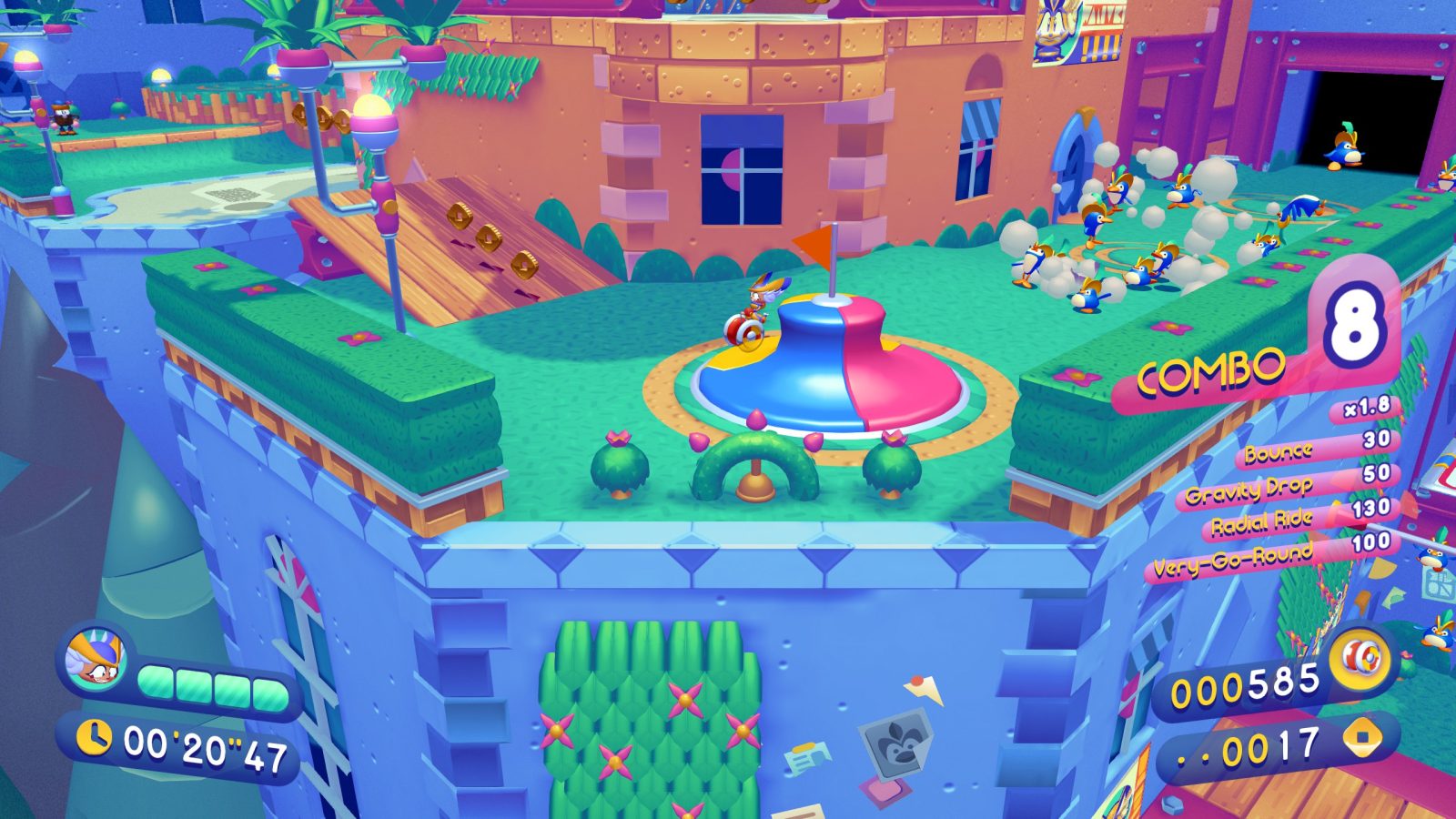
The game as a whole is also pretty glitchy. Many times when I failed a jump or fell off a cliff it was because Penny just stopped responding to inputs for a split second. Double jumps and dashes just wouldn’t work, and this is to say nothing of the ledge grab which only functions properly a third of the time. And did you know there’s a wall jump? I didn’t until a friend told me because it never worked.
I hate to be so negative here, because when the game is fun it’s some of the best platforming out there. It looks gorgeous too, with almost every world having a distinct, creative style. Penny looks a bit off when she opens her mouth, but it’s part of her little gremlin charm. The animated cutscenes are great too, though they looked pretty bad on my PC with low resolution and weird green artifacts – on Steam Deck it was perfect. The game really did not like my PC, in fact, as I encountered a soft lock on level 6-3 that would have prevented me from finishing the game, so maybe go with console on this one.

Jack:
Putting on a good performance depends on your ability to focus. You have to put your all into it; no distractions! Any half-heartedness or regrets will show. It doesn’t really matter what you’re performing, but since you’re here for a review of it anyway, let’s use Penny’s Big Breakaway as an example. This is a game that plays best when you focus on playing it in a very specific way. However, it’s also a game with great ambition – it wants to be and do more than one specific thing. While I admire the enthusiasm, there’s no getting around it: the other stuff makes for a distracting performance, and by extension, a game that didn’t work for me as well as I expected.
Regardless of how you feel about this particular performance, you can’t deny that Penny works hard, and by extension, so do you. The controls steal the show as the single most important element of the game. Penny uses a yo-yo to extend her reach and do all kinds of things that I’m pretty sure yo-yos can’t actually do. Whether you’re swinging around or riding it around like a vehicle, there’s a learning curve to effectively performing all of the tricks Penny has up her sleeve. Your speed, momentum, and timing all need to be properly factored into effectively controlling your character.
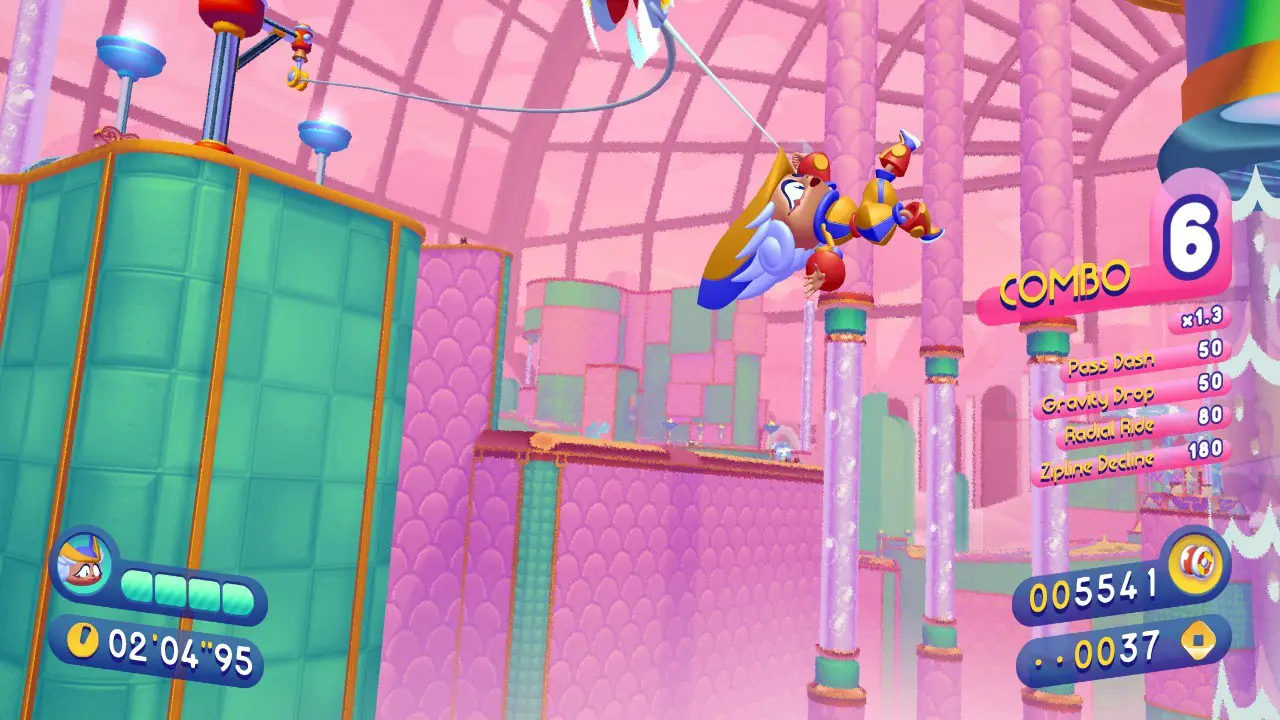
While some may find this learning curve unwieldy, I love it. We are living in an era of relatively “standardized” game design; more and more developers choose to play it safe with their control setup in hopes of appealing to the widest audience possible. Even if understandable, that decision sacrifices a notable reason to play new games at all. In their simplest form, video games are challenges. Plenty of challenges can be endlessly iterated on, yet if they all iterate in the same ways, you grow numb to the familiar. In order to make something truly excellent, you can’t just follow any established “laws” of game design. You need to break the rules and create your own. Video games are such a diverse format that it would be a disservice to the medium to not take risks like that.
Penny excels at breaking the rules, both in and out of the narrative. Penny is not out to save the world, she simply wants to stay out of jail. Your yo-yo moves can throw you to your doom just as easily as they can help you traverse the environment. You don’t jump on enemies; instead you avoid them. The game takes place in an expansive three-dimensional environment where you don’t control the camera at all. As a platformer, Penny narrowly avoids the majority of established conventions. At times that can make it a frustrating game to play, yet more often than not that also makes it an engaging one.
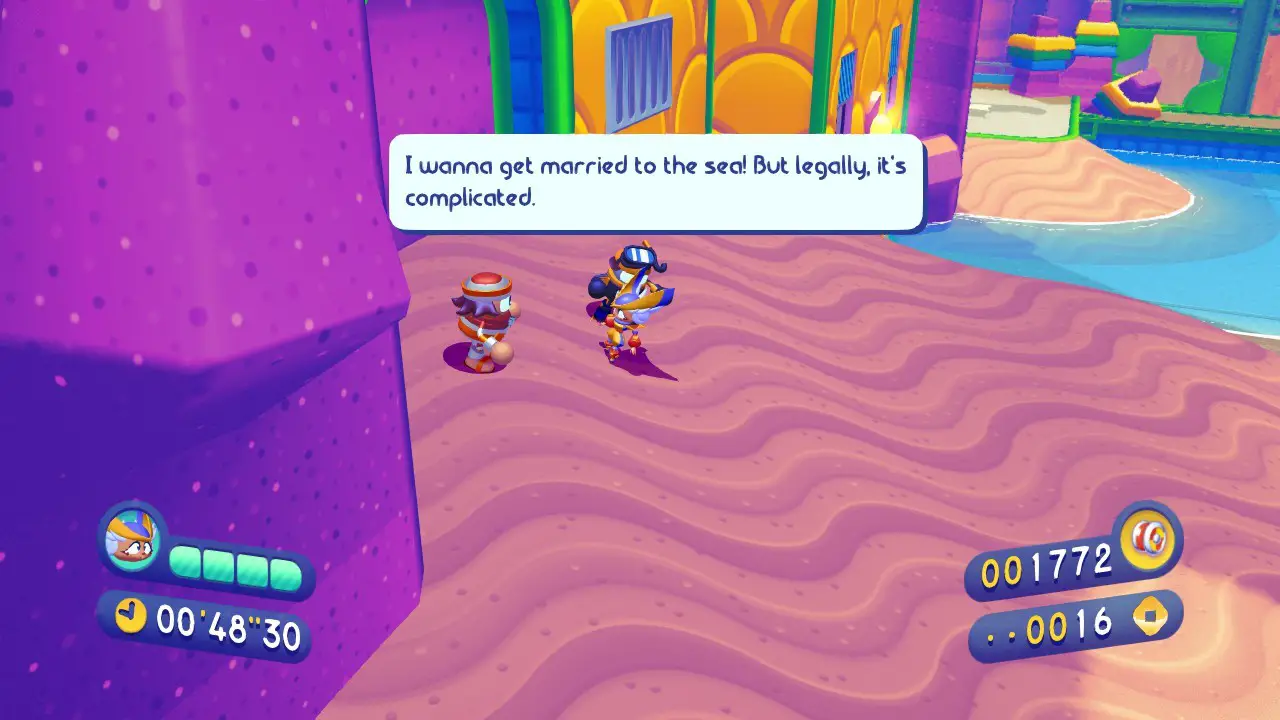
Everything from the controls to the obstacles to the camera emphasize what makes the game fun: moving quickly and efficiently towards the end of each stage. Nothing feels better than skipping large chunks of a level with some skillful swings and yo-yo dashes and then landing with a seamless transition into the yo-mobile as you speed downhill. I actively sought out the Time Trial mode in order to keep working down my time. Penny’s Big Breakaway establishes a multitude of unique rules that help it excel as a speedrun game.
From that perspective, breaking the rules pays off. However, upon closer inspection I found that Penny’s Big Breakaway often breaks its own rules.
The most obvious example lies in the inconsistency of its mechanics. While this paragraph may eventually be invalidated by patches down the line, in its current state, Penny’s Big Breakaway lacks polish. Throughout my time with the game I got stuck in walls, my yo-yo failed to retract, inputs would occasionally not register, and encountered many more unfortunate mishaps. These issues don’t entirely ruin the game, but it never feels good to have to restart a run because something didn’t function how you’d expect.
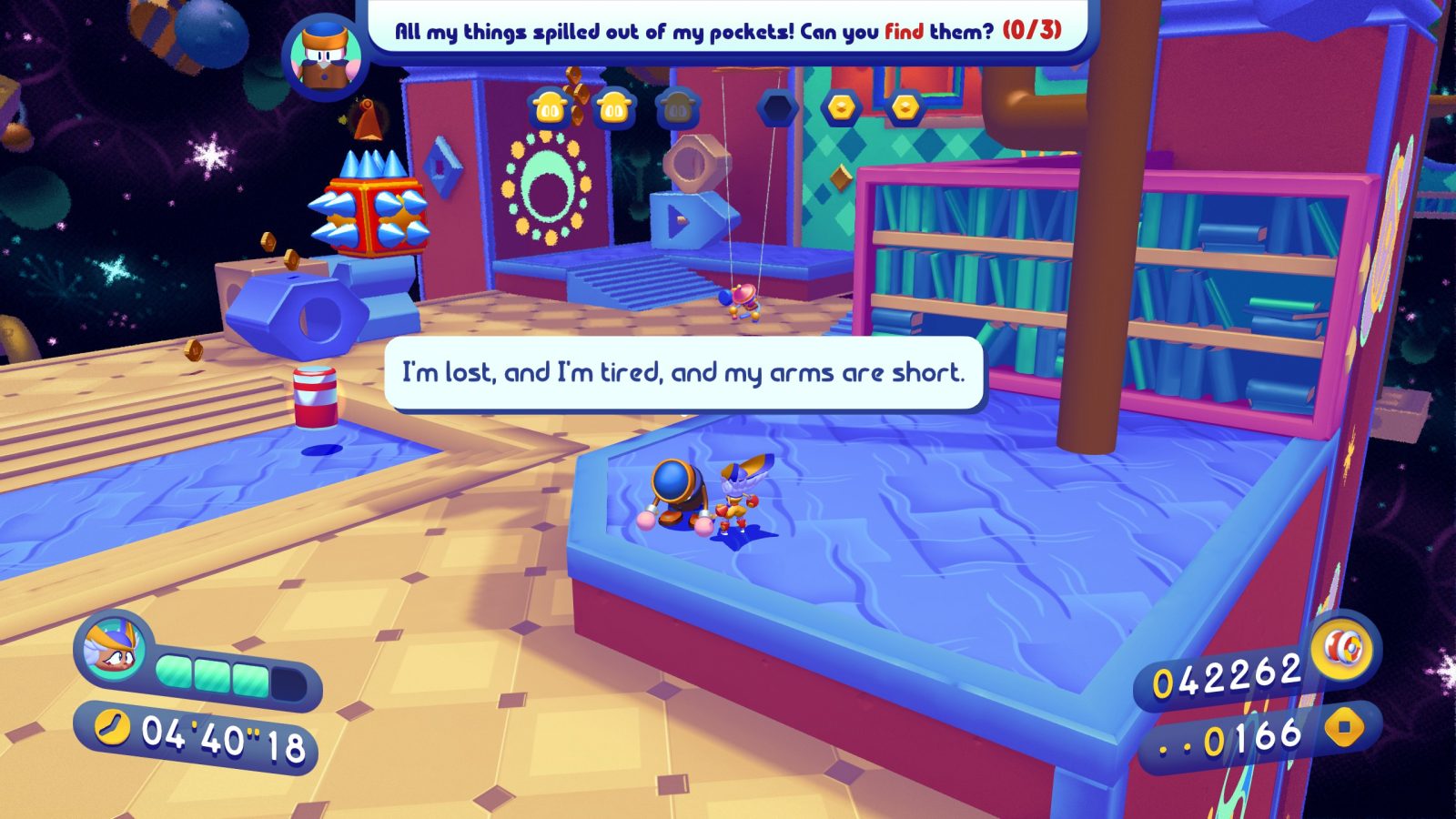
There are also deeper-rooted issues with how this game is designed that run contrary to its strengths. Collectibles and denizens in need litter the open 3D environments. Grabbing hidden coins and helping people out with their various tasks rewards you with extra points and the ability to unlock bonus levels. Some incentive to explore the levels makes sense and can be nice, but only to an extent.
Everything on a mechanical level encourages you to constantly speed forward – there’s even a combo system that breaks if you stop in your tracks. Taking time to explore or hear someone out feels bad in a game like this. It feels even worse when you miss something and try to go backwards. The fixed camera makes it a pain to backtrack, to the point that in most cases you’re better off simply restarting the level rather than making a blind trek backwards.
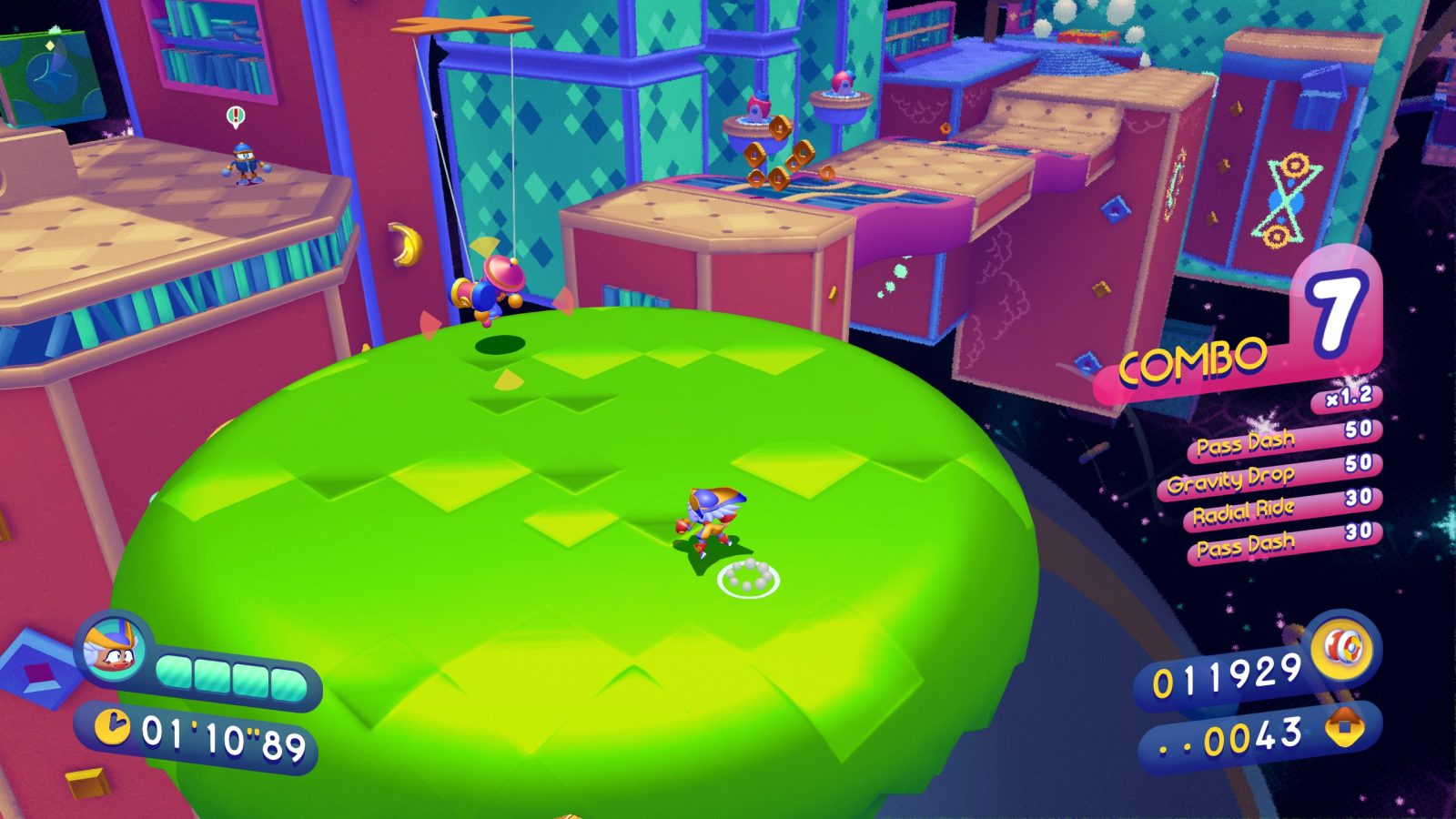
Speed and exploration simply don’t mix due to how this game is designed. These concepts don’t flow together and even drag the game down when you try to mix them. I’m the kind of person who feels compelled to grab all of the collectibles before I can move on, which ruined a few levels for me the first time around. Many levels end up being a lot less fun when you need to stop and start so often, and that’s when things work as you’d expect. Many of the side quests are time-based, and the timer begins the moment you stand within the quest giver’s radius. This results in some cheap scenarios where you lose out on a chunk of time to complete your objective because you need to read the text before understanding what you need to do. The execution of these side challenges unfortunately comes across as haphazard and sloppy.
Boss battles represent the worst extremes of the haphazard design. I like the general concept of what most of these battles go for. In execution they ask you to wait around a lot or contend with awkward design elements that simply don’t fit the speedy nature of the game. At their best I found the bosses tolerable, while the worst ones I found to be borderline broken.
Penny's Big Breakaway
Good
A compelling game lies at the heart of Penny's Big Breakaway. If you're willing to give it the proper staging and some time to practice, it will put on a great show as a speedy platformer with a fun learning curve. However, getting to that point requires seeing past its many distracting elements. I enjoyed my time with Penny, but if we're being honest, I think she needs to polish her act.
Pros
- Incredible movement
- Innovative controls
- Fantastic music and sound design
Cons
- Constant interruptions to your flow
- Bad boss battles
- Very glitchy

